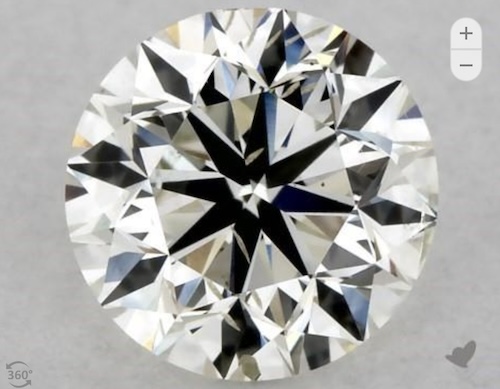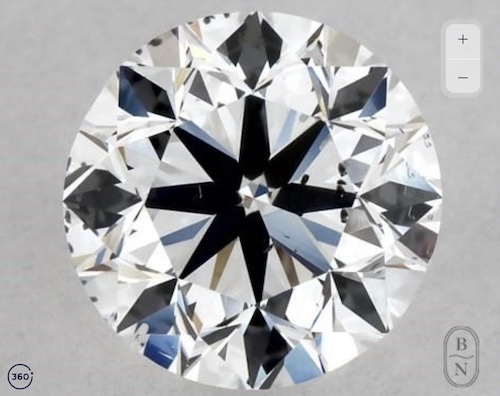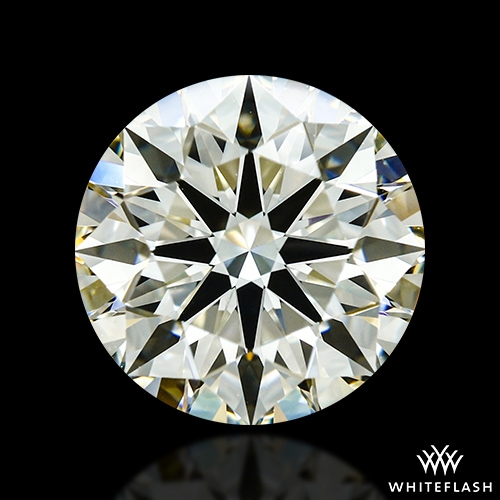Diamond Education
G Color Diamonds
Diamonds have long been celebrated for their brilliance, beauty, and symbolism. Central to their allure is the color, or sometimes the lack thereof, that each diamond possesses. As one delves into the world of diamonds, the significance of color grading becomes evident, guiding both the value and the visual appeal of the gem.
Among the spectrum of diamond colors, G color diamonds occupy a unique space. Positioned as one of the "near-colorless" grades, they offer a delicate balance of quality and value. In this guide, we'll explore the nuances of G-color diamonds, shedding light on their characteristics and helping you make an informed decision for your next precious purchase.
Summary:
- Understanding G Color Diamonds
- G Color Diamonds vs. Other Grades
- How Much Does a G Color Diamond Cost
- G Color Lab-Grown Diamonds
- Where to Buy G Color Diamonds
Understanding G Color Diamonds
G color diamonds, often described as near-colorless, hold a special allure for many diamond enthusiasts and buyers. They sit just at the cusp where the human eye begins to detect traces of color, yet they maintain a brilliance that's hard to distinguish from the higher grades to the untrained observer.
Position in the Near-Colorless Category
The Gemological Institute of America (GIA) color grading scale classifies diamonds from D (colorless) to Z (light yellow or brown). G color diamonds are categorized within the "near-colorless" range, which also includes H, I, and J grades. While they might contain slight traces of color, these are typically challenging to identify unless compared side-by-side with diamonds of higher color grades.
Visual Appearance
To the naked eye, a G color diamond will often appear just as colorless as those in the D-F range, especially when set in jewelry. The subtle color nuances become more evident when these diamonds are viewed loose, against a white background, and compared directly with diamonds of higher grades.
G Color Diamonds vs. Other Grades
When considering a diamond purchase, understanding how G color diamonds compare to other grades can provide clarity on their value and appeal.
G vs. D, E, F (Colorless Range)
Diamonds graded D, E, and F are considered "colorless." While a D grade represents absolute colorlessness, the difference between D and G is subtle but discernible under close examination. In a setting, especially when mounted in yellow or rose gold, the distinctions between a G color diamond and those in the D-F range can become almost negligible to the untrained eye.
G vs. H, I, J (Lower Near-Colorless Range)
As we move down the color scale, the differences become slightly more pronounced. A G color diamond will typically appear more colorless than an I or J graded diamond. However, when set in jewelry, especially with certain metals or designs that can mask or complement the diamond's color, the differences might be less noticeable.
G vs. K and Below
Diamonds graded K and below start to exhibit noticeable color, often a faint yellow or brown hue. In direct comparison, a G color diamond will stand out for its superior colorlessness and brilliance.
A K color diamond, though on the warmer end of the color spectrum, can appear significantly whiter when it's expertly cut. A precise and high-quality cut enhances the diamond's brilliance and sparkle, effectively masking some of its yellowish hues. This optical illusion, created by the interplay of light within the diamond, can make it seem closer to a colorless grade, emphasizing the importance of cut quality in determining a diamond's overall appearance.
How Much Does a G Color Diamond Cost?
The cost of a diamond is influenced by a myriad of factors, with color being a significant determinant. G color diamonds, given their near-colorless quality, are priced higher than diamonds with more noticeable color but generally less than those in the absolute colorless range.
Natural G Color Diamonds
For a 1-carat natural G color diamond, prices can vary widely based on other factors such as cut, clarity, and source. On average, you might expect to pay anywhere from about $3,000 to as much as $13,000. The lower end of this range might get you a diamond with slight inclusions or a less-than-ideal cut, while the higher end would typically represent a diamond with excellent clarity and cut.
Lab-Grown G Color Diamonds
Lab-grown diamonds have gained traction for their ethical production and often more accessible price points. For a G color lab-grown diamond of 1 carat, the cost is significantly lower than its natural counterpart. Prices typically range from $600 to $1,300. The reduced cost doesn't imply inferior quality; it's a reflection of the less resource-intensive production process and the absence of mining costs.
G Color Lab-Grown Diamonds
Lab-grown diamonds have made significant strides in the jewelry market, offering an ethical and sustainable alternative to natural diamonds. G color lab diamonds, with their near-colorless allure, are no exception. However, when considering a lab-grown diamond, there are specific factors to keep in mind to ensure you're making an informed purchase.
Certification is Crucial
Just as with natural diamonds, certification is paramount for lab-grown diamonds. Ensure that your G color lab diamond comes with a certificate from a respected and renowned lab. The International Gemological Institute (IGI) and the Gemological Institute of America (GIA) are two of the most reputable institutions in the diamond industry. Their certifications provide an assurance of the diamond's quality, authenticity, and the accuracy of its grading.
Visual Verification
In today's digital age, purchasing diamonds online has become commonplace. When considering a G color lab diamond, especially online:
- High-Definition Images: Ensure the retailer provides high-definition images of the diamond. This allows you to inspect the diamond closely, identifying any potential inclusions or characteristics that might influence your decision.
- Videos: Videos can offer a 360-degree view of the diamond, showcasing its brilliance, fire, and scintillation in motion. This gives a more comprehensive understanding of how the diamond interacts with light.
- Light Performance Images: These specialized images can provide insights into the diamond's light performance, revealing how it reflects and refracts light. It's an additional layer of verification that can attest to the diamond's quality and visual appeal.
In essence, G color lab-grown diamonds present a compelling option for the modern buyer. With their ethical production, attractive price point, and near-colorless brilliance, they're a choice worth considering. However, always prioritize diamonds with reputable certifications and utilize available visual tools to ensure you're making a well-informed decision.
Where to Buy G Color Diamonds
Navigating the vast world of diamond retailers can be daunting. However, when it comes to purchasing G color diamonds, whether natural or lab-grown, there are a few standout choices that cater to different preferences and budgets.
- James Allen: Diversity at Attractive Price Points
James Allen is a go-to for those seeking a broad selection, especially if you're on the hunt for more affordable options. Their expansive inventory ensures that you'll find a G color diamond that fits both your taste and budget. With their high-quality imaging technology, you can inspect each diamond closely, ensuring transparency in your purchase.
- Whiteflash: The Pinnacle of Quality
For those who prioritize the utmost quality, Whiteflash is a top contender. They're renowned for their A CUT ABOVE® diamonds, which represent the pinnacle of diamond cut quality, whether natural or lab-grown. Every diamond from Whiteflash promises exceptional brilliance and fire. Additionally, their curated collection of designer engagement rings ensures that the setting is as impeccable as the diamond it holds.
- Blue Nile: A Vast Sea of Choices
Blue Nile stands out for its sheer volume of inventory. While they might not emphasize the highest quality for every diamond, the vast selection ensures that everyone can find something that resonates with their preferences. Furthermore, their flexible payment options make the purchasing process smoother, catering to a range of financial situations.
Conclusion
G color diamonds, with their near-colorless brilliance, offer a harmonious blend of quality and value. Whether you're leaning towards a natural stone or considering the modern allure of lab-grown diamonds, the key is to be well-informed. Prioritize reputable retailers, ensure certification from esteemed labs, and utilize visual tools for a transparent buying experience. With the right knowledge and trusted sources, your G color diamond will be cherished forever.




